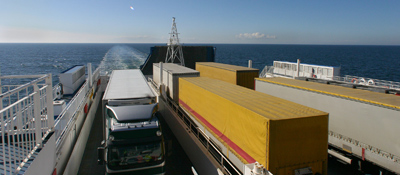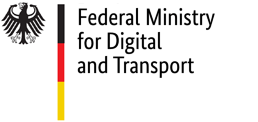Referat Nautik
Brandstwiete 1
20457 Hamburg

Peer Lange
Phone: +49 40 361 37-319
Fax: +49 40 361 37-204
Mobile: +49 171 882 70 68
Mail: nautik@bg-verkehr.de
Oya Sönmez
Phone: +49 40 361 37-239
Fax: +49 40 361 37-204
Mobile: +49 171 88 53 239
Mail: oya.soenmez@bg-verkehr.de
Passenger ships
- What is a passenger ship?
- Domestic voyages are covered by European legislation
- In addition German law applies
- Categorization of passenger ships
- International voyages are covered by the SOLAS Convention
- Ship safety certificates and surveys
What is a passenger ship?
A passenger ship is specially designed and equipped for the transport of persons. According to the provisions of the International Convention for the Safety of Life at Sea (SOLAS) any ship with accommodation for more than 12 passengers is a passenger ship. Persons other than passengers are regarded as crew.
Passenger ships engaged on domestic voyages are covered by European legislation
The European Directive 2009/45/EC (consolidated text) contain safety rules and standards for passenger ships engaged in demostec voyages.
The Directive 2009/45/EC (consolidated text) applies to:
- new passenger ships acc. to section 1: any length, keel laid between 1 July 1998 and 18 September 2021,
- new passenger ships acc. to section 2: 24 m length and above, keel laid on or after 19 September 2021,
- existing passenger ships: 24 m length and above, keel laid before 1 July 1998,
- high-speed passenger craft engaged on domestic voyages, regardless of their flag.
Any passenger ship and high-speed passenger craft engaged in domestic voyages are subject to the provisions of the Directive.
The directive does not apply to passenger ships which are:
- ships of war and troopships,
- ships not propelled by mechanical means,
- ships constructed in material other than steel or equivalent and not covered by the international standards concerning high speed craft,
- wooden ships of primitive build,
- original, and individual replicas of, historical passenger ships designed before 1965, built predominantly with the original materials,
- recreational yachts,
- ships exclusively engaged in port areas.
In addition German law applies
The European Directive 2009/45/EC on safety rules and standards for passenger ships is implemented in Germany by the German "Schiffssicherheitsverordnung" (ship safety ordinance), in particular annex 1a part 1 on safety requirements for passenger ships. This German guideline contains supplementary provisions for certain passenger ships. Furthermore, it defines the safety standard for passenger ships engaged on domestic voyages and not covered by the Directive 2009/45/EC. These are in particular existing passenger ships of less than 24 m length and ships constructed in material other than steel.

Categorization of passenger ships engaged on domestic voyages
Passenger ships engaged on domestic voyages are categorized into four different classes A, B, C and D, according to the sea area and offshore distance. The list of sea areas is published in the Official Journal of the European Communities. High-speed passenger craft are also categorized according to the International Code of Safety for High Speed Craft (HSC code).
Passenger ships engaged on international voyages are covered by the SOLAS convention
Passenger ships engaged on international voyages are covered by the International Convention for the Safety of Life at Sea (SOLAS).
Ship safety certificates and surveys
All passenger ships are subject to periodical surveys, performed by the surveyors of the ship safety division of the BG Verkehr.
All new and existing passenger ships covered by the European Directive 2009/45/EC on safety rules and standards for passenger ships must carry a safety certificate, issued by the flag state administration and valid for not more than one year.
High-speed passenger craft which comply with the requirements of the International Code of Safety for High Speed Craft (HSC code) are also issued with a safety certificate.


